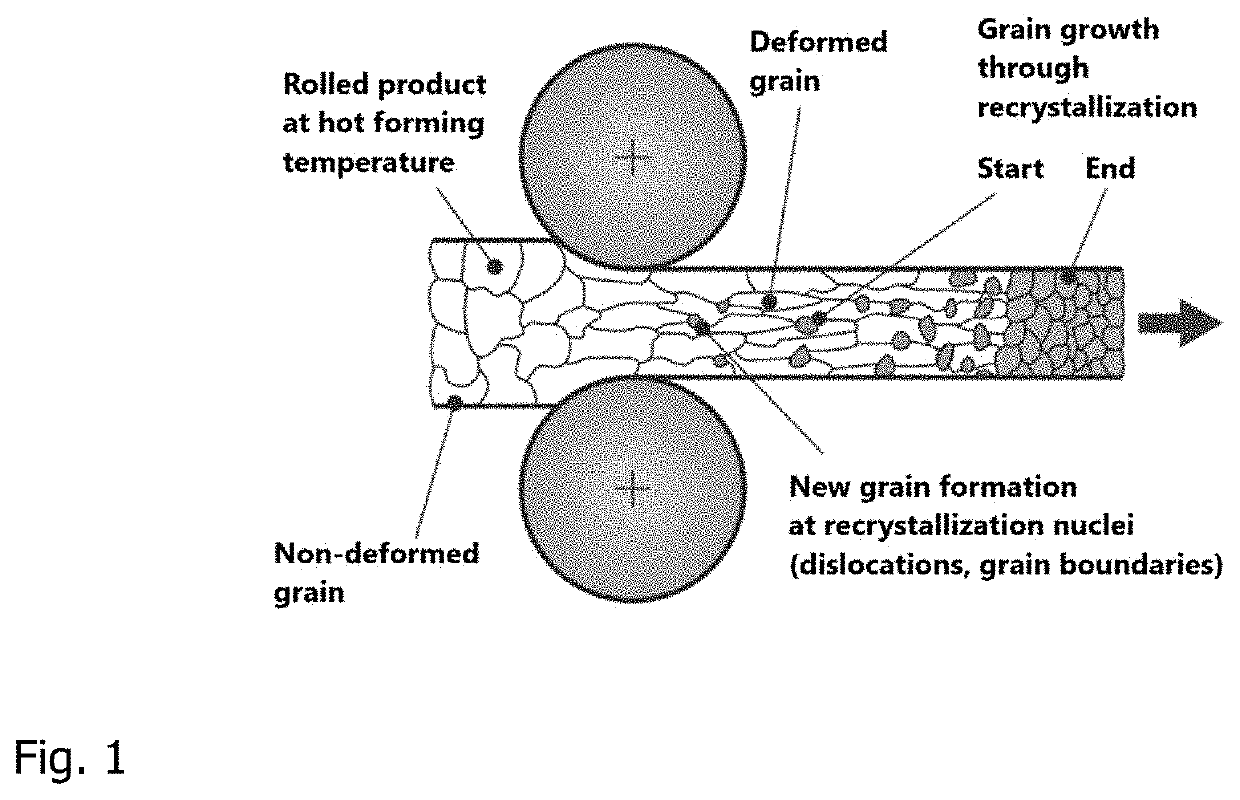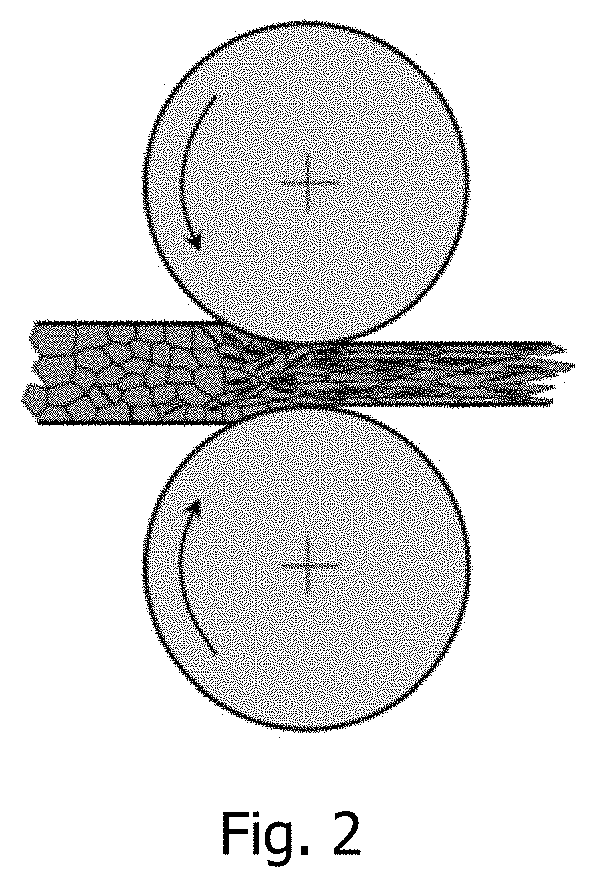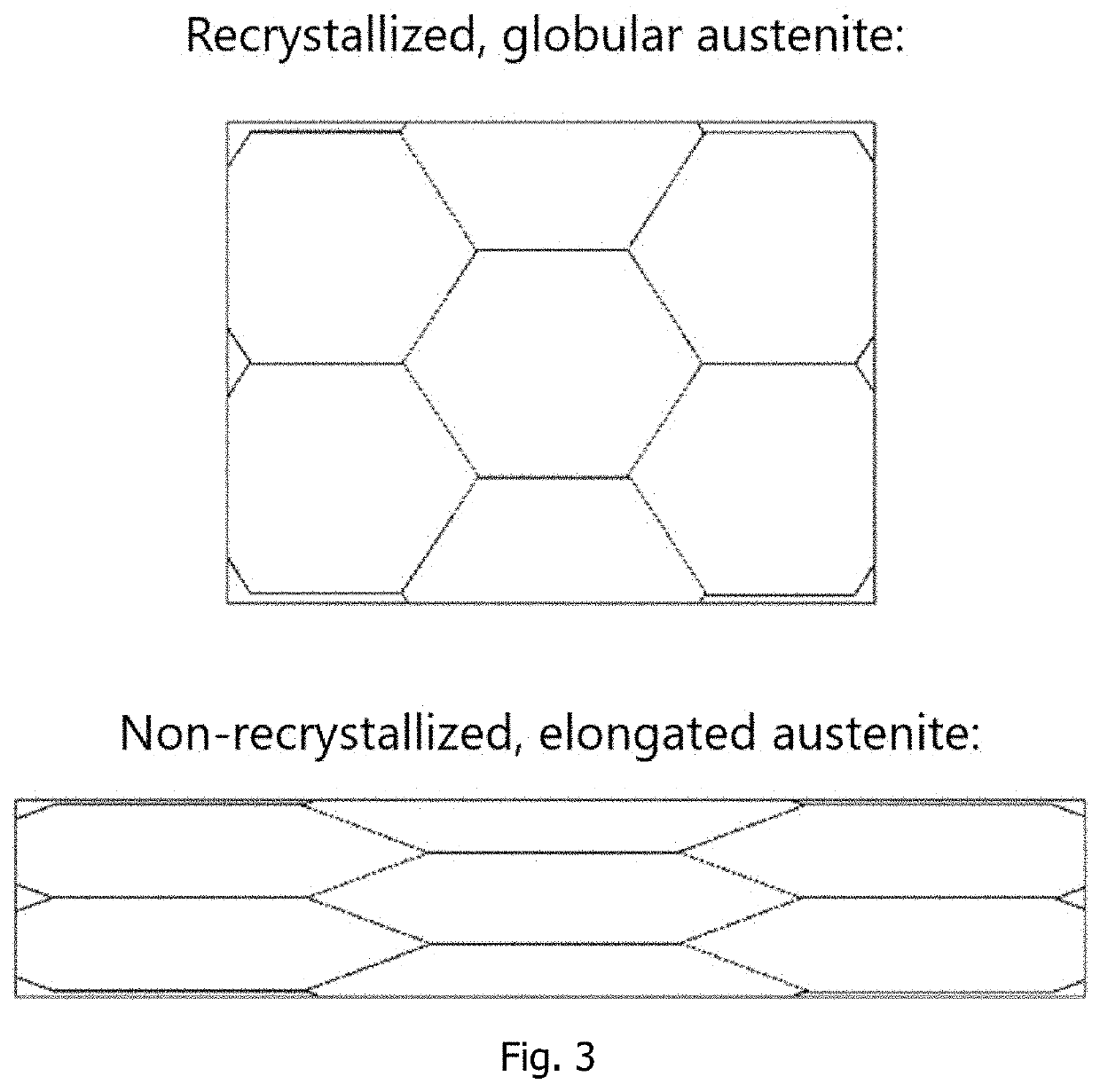Method for Producing Conventionally Hot-Rolled Profiled Strip Products
a technology of hot-rolled profiles and products, which is applied in the direction of heat treatment equipment, manufacturing tools, furnaces, etc., can solve the problems of mechanical/technological properties that cannot be achieved with piece goods, problems arise, and conventional hardening or quenching and tempering cannot be performed with piece goods, etc., to achieve good processability, improve properties, and improve weldability
- Summary
- Abstract
- Description
- Claims
- Application Information
AI Technical Summary
Benefits of technology
Problems solved by technology
Method used
Image
Examples
Embodiment Construction
[0170]According to the invention, steel is conventionally hot-rolled and subjected to a short-term heat treatment in order to increase the properties of toughness and isotropy as well as other properties.
[0171]According to FIG. 1, conventionally hot rolled steels, steels in which the rolled product is first heated to the hot-forming temperature and then rolled, by means of which the non-deformed grain is deflected in the rolling direction; already during the rolling, a recrystallization takes place after each roll pass, at the end of which the respective austenite grain has a globular form.
[0172]By contrast with this, thermomechanically rolled steels contain higher concentrations of carbide-forming elements, which form precipitation already during the hot rolling. The precipitation and the dissolved micro-alloying elements delay or suppress the recrystallization after the roll passes. Correspondingly, a recrystallization and a corresponding grain growth do not occur so that accordin...
PUM
| Property | Measurement | Unit |
|---|---|---|
| Temperature | aaaaa | aaaaa |
| Temperature | aaaaa | aaaaa |
| Temperature | aaaaa | aaaaa |
Abstract
Description
Claims
Application Information
 Login to View More
Login to View More - R&D
- Intellectual Property
- Life Sciences
- Materials
- Tech Scout
- Unparalleled Data Quality
- Higher Quality Content
- 60% Fewer Hallucinations
Browse by: Latest US Patents, China's latest patents, Technical Efficacy Thesaurus, Application Domain, Technology Topic, Popular Technical Reports.
© 2025 PatSnap. All rights reserved.Legal|Privacy policy|Modern Slavery Act Transparency Statement|Sitemap|About US| Contact US: help@patsnap.com



